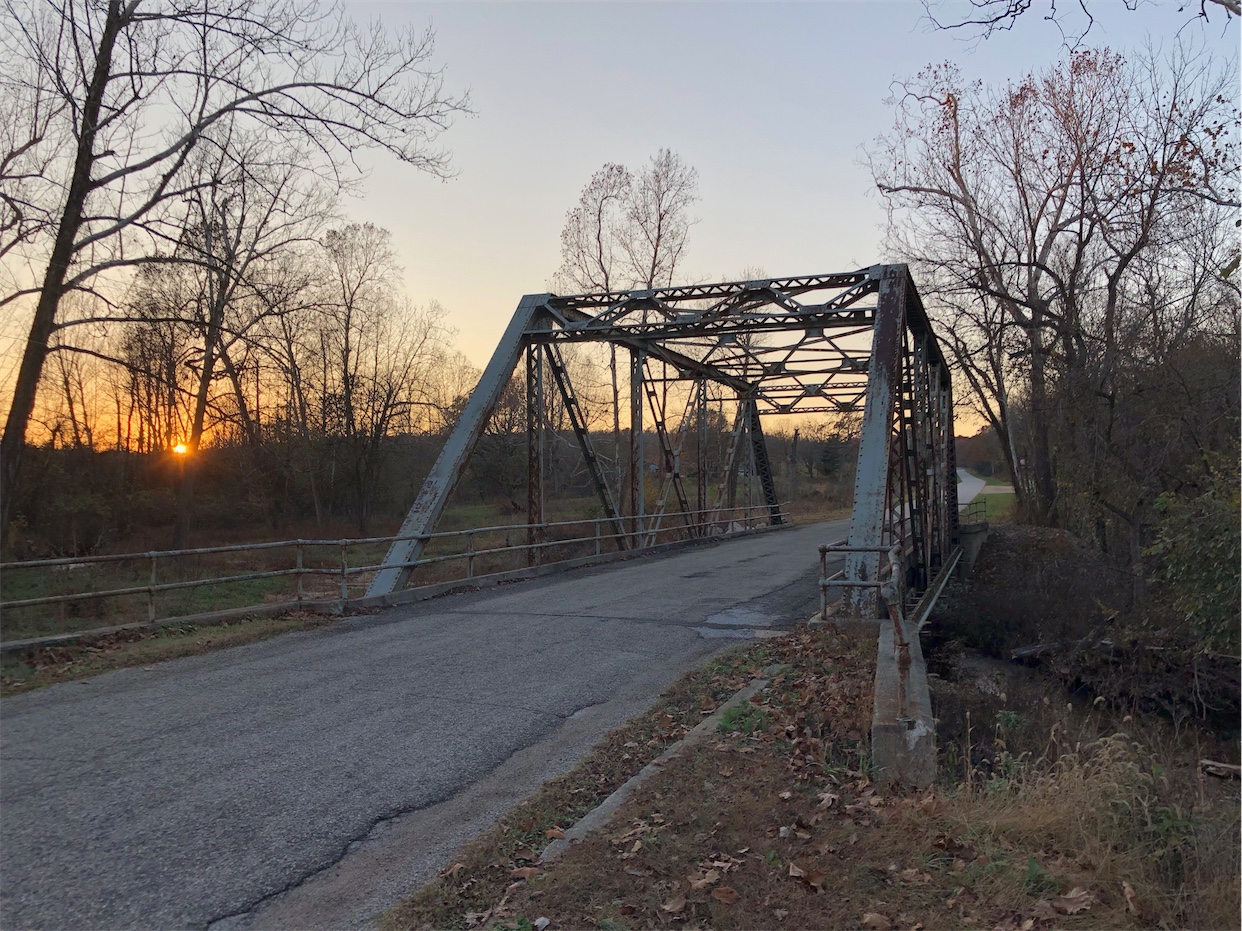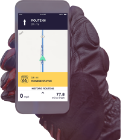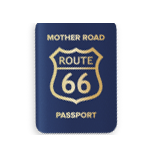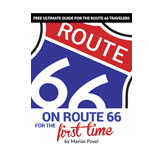FAQ
- Avoid the interstate and travel on historic Route 66 only with turn-by-turn Route 66 Navigation app for smartphones
- Purchase Route 66 Passport before your Route 66 trip. Click here
-
Do you prefer paper maps?
Try McJerry's EZ 66 Guide Book
Random point of interest

Spencer Bridge
The truss bridge that spans Turnback Creek dates to 1923.
DetailCan I ride Route 66 on a Bicycle?
Can I ride Route 66 on a Bicycle?
Most of the Route 66 travelers you’ll find online are “car people”, so they might not see your reason to do this. Don’t let them discourage you too easily but do know of the dangers you will face and prepare for them.
You’re up to a few challenges!
Neither Mother Nature, nor traffic should never be underestimated: there is real danger in undertaking such a trip.
Desert
You’ll be crossing quite some miles through the desert. While people back in the days did cross it, nowadays you can’t rely on the old (rare) water sources anymore, nor do we have the skill to find and use them if we were allowed to get to them. So, you need to carry a lot of water as there’s no resupply that you didn’t organize or plan for yourself.
Carrying enough water on foot to survive the trip is impossible. That said, on a bicycle it seems feasible. But do realize that running into trouble means life-threatening consequences. Moreover, the patrols done to find stranded people (by air) won’t see a bicycle – they look for cars (much bigger of a target).
Altitude
Not so much the steep slopes (they exist, but that’s what training is for) but the altitude itself of over 7000 feet (about 2200 meters) really gets to you if you’re not used to it. Our bodies can adapt to it, but it needs more time than the trip offers. If you live at sea level, you might have to plan on going slower as the altitude increases.
Wildlife
On a bicycle, you’re more exposed to things like snakes, insects, aggressive dogs, etc. Be prepared for them.
Interstates
In most states, it’s illegal to ride a bicycle on the interstates. It’s a bad idea to do so anyway as the difference in speed makes it unsafe.
When following turn-by-turn directions, there is sometimes mention of “unavoidable” Interstate. While that’s not true in strict terms, it will mean that you will have to endure a significant detour not to use the Interstate.
E.g.: the only bridge nowadays that can carry you across the Colorado River near where Route 66 crossed it, is an Interstate bridge (prohibited for bicycles). The next opportunity to cross the Colorado River is upstream: 16 miles away one-way.
Busy Highways
Other busy roads are an equal, if not a greater danger. Especially in or near larger cities the roads can get quite a bit of traffic that’s not always expecting a bicycle.
The portions of Route 66 that parallel I-44 in Oklahoma are also much busier, even in rural areas due to the Interstate being a toll road. Some avoid it, and there are fewer exits for the locals to get on or off of it, so they tend to stay more on the old highway.
Any place where the old road is currently maintained as a US highway or even a state highway most often means it’s busier, more big rigs, …
Bike paths
In select places, there’s a bike path close to Route 66. Although, unfortunately sometimes it was created by destroying a real Route 66 alignment and/or removing access to it for those not having a bicycle with them.
Still, where they exist, such paths are obvious choices but don’t expect them to be everywhere nor continuous.
Accommodations
Some stretches are sparse in accommodation availability. They are easily covered in a car but are significantly beyond the range of a typical bicycle. When there are no accommodations available, you’ll have to either camp out (and carry the gear!) or get shuttled out and in by your support crew.
Bicycle choice
Amount of traffic and amount of maintenance tend to go hand-in-hand. So, the less traffic a road gets, the less maintained it is going to be. In the end, you’ll need to match your need for slower motorized traffic (and the bad roads that come with it), with your choice of riding gear.
For solo riders, this means that you’ll likely need more of a sturdy (slower) bike that can carry gear, spare parts and multiple gallons of water and have off-road tires to avoid punctures on less than smooth roads.
For groups with a support vehicle: they might still find a way to use the faster road racing bikes as the support vehicle can protect them (to a degree) from traffic and remove the need to carry things on the bike.
Dangerous?
Yes, crossing the USA on a bicycle is significantly more dangerous than in a car. There’s no doubt about that. But crossing it in a car is also more dangerous than in an airliner. Yet, we still use cars to drive Route 66. In the end, it’s a choice.
Just take a few examples:
- July 20th 2010: James Cracknell -an Olympic rowing champion- who, while crossing the US, was hit on the back of the head by a truck when riding his bicycle. He was wearing a crash helmet. But as you can imagine, these things aren’t intended to take on trucks. He was severely injured. This happened near Winslow, AZ on Route 66. He did have a support crew: Discovery was filming his exploit, but they were not shooting at the time of the accident.
- May 10th 2018: Two German citizens were killed while riding Route 66 on their bicycles, just outside of Galena, KS on a 4-lane alignment. They were struck from behind by a van.
How to reduce the danger:
- A support vehicle can help a lot: it can carry much more water, gear, spare parts, … than your bicycle can, it can shield you from traffic to a point and it can scout ahead where needed. It’s good to get you out of tight spots you might end up in.
- There is safety in numbers (but don’t get too confident, you’ll still be very vulnerable)
- Prepare yourself, plan ahead but remain flexible to what you can achieve.
- Realize that being self-supporting in the desert is extremely difficult, and if your plans go wrong ever so slightly, you can be in acute danger. So, if you have no support crew, make sure others look out for you, esp. if you’re going solo.
Is it possible?
Sure! Others have done it. Just don’t underestimate the dangers involved and come prepared. E.g.: Pictures of a group of 4 cyclists (with a support vehicle)
Any publications?
There’s a set of maps designed for bicyclists on Route 66 published by Adventure Cycling Association:
- Map #1: Chicago, IL – St. Louis, MO
- Map #2: St. Louis, MO – Joplin, MO
- Map #3: Joplin, MO – Adrian, TX
- Map #4: Adrian TX, – Gallup, NM
- Map #5: Gallup, NM – Oatman, AZ
- Map #6: Oatman, AZ – Santa Monica, CA
Any tour organizers?
Adventure Cycling does organize a guided, van-supported tour along Route 66. It’s not done all that often, but it’s a way to get a group of like-minded people, a support vehicle, and experience all in one go.





